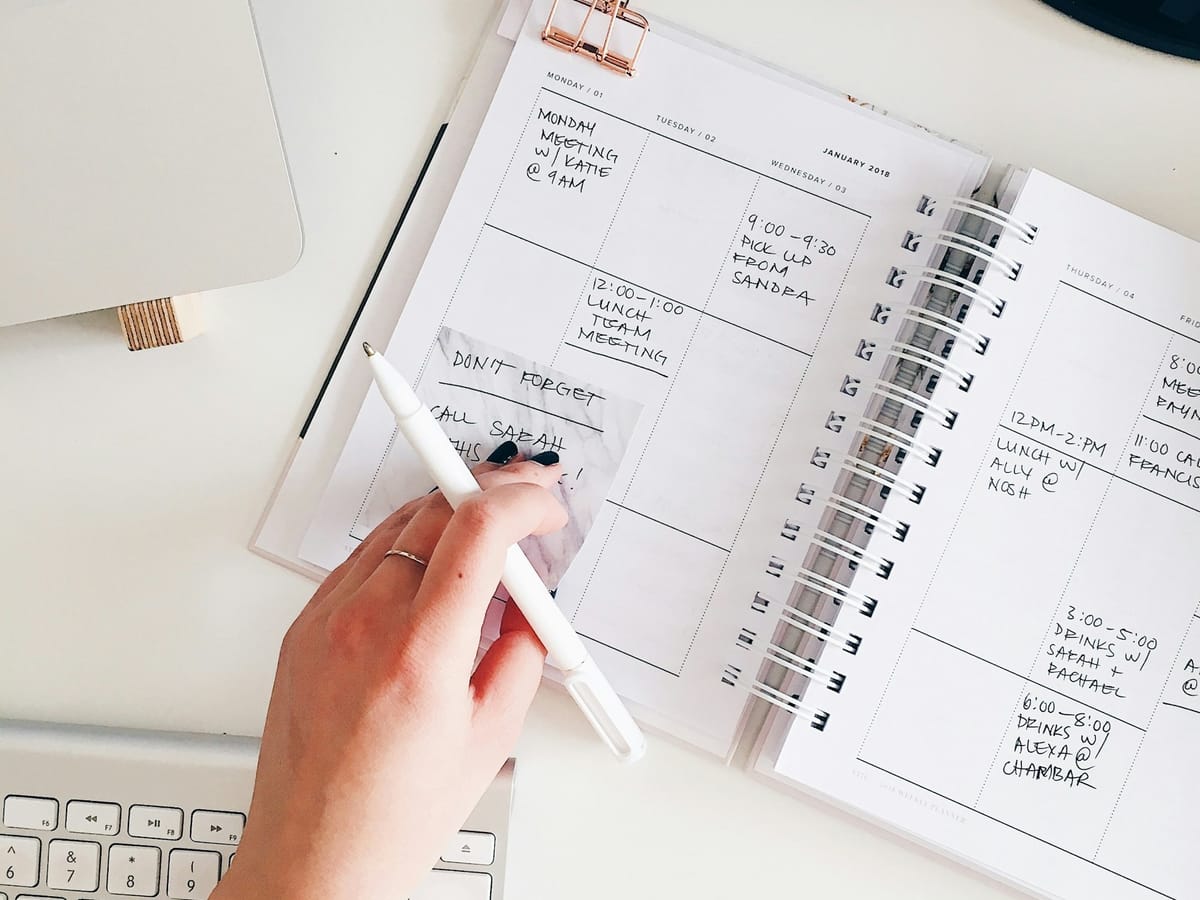How to Plan Your Day With ADHD (Even When You Feel Scattered)

Planning your day with ADHD can sometimes feel like an uphill battle. Distractions are everywhere, procrastination can feel inevitable, and staying on task can be extremely challenging. However, with the right strategies in place, you can structure your day effectively and feel more in control. Here's a practical guide on how to plan your day with ADHD, even when you're feeling scattered.
Understanding ADHD and Daily Planning
Attention Deficit Hyperactivity Disorder (ADHD) affects executive functioning skills, which are crucial for planning, organizing, and managing time effectively. Common struggles include procrastination, forgetfulness, trouble prioritizing tasks, and feeling overwhelmed. Knowing this helps in crafting a daily plan tailored to your unique needs.
Why Traditional Planning Often Fails for ADHD
Typical productivity methods rarely accommodate the way an ADHD brain works. Planners, long to-do lists, and rigid schedules can lead to overwhelm or a sense of failure when not followed precisely. This feeling can further discourage productivity, making it harder to plan your day with ADHD.
Instead, adopting ADHD-friendly planning techniques that incorporate flexibility, visual elements, and a clear structure can significantly improve your daily productivity.
How to Effectively Plan Your Day With ADHD
Step 1: Start With a Clear Brain Dump
The first thing you should do is a comprehensive brain dump. Set a timer for 10-15 minutes and write down everything that's swirling in your mind—tasks, worries, appointments, random thoughts, everything. This clears your mental clutter, reducing overwhelm and creating a solid foundation for planning.
Step 2: Prioritize Using the Eisenhower Matrix
Once your brain dump is complete, categorize each task using the Eisenhower Matrix:
- Urgent and Important: Immediate action needed.
- Important but Not Urgent: Schedule these.
- Urgent but Not Important: Delegate if possible.
- Neither Urgent nor Important: Eliminate or reduce drastically.
This method simplifies task prioritization, vital for managing ADHD.
Step 3: Break Tasks Into Smaller, Actionable Steps
Breaking down larger tasks into smaller, more manageable steps helps reduce procrastination. For example, instead of "write report," break it down to:
- Gather research material
- Draft outline
- Write introduction
- Complete first draft
- Edit and proofread
Each smaller step feels achievable and motivates you to continue progressing.
Step 4: Use Time Blocking and Flexible Scheduling
Traditional scheduling methods might feel restrictive. Time blocking provides structure but with flexibility. Allocate specific periods to tasks or groups of tasks, but keep your schedule open enough to adapt as necessary.
For instance, allocate a block in the morning for high-focus tasks and shorter blocks later for lighter tasks or breaks. Always include buffer times to accommodate unpredictability.
Step 5: Implement Visual Planning Tools
Visual planning can be highly beneficial for individuals with ADHD. Tools like colorful calendars, sticky notes, whiteboards, or digital apps (such as Trello or Notion) can offer the visual cues necessary to remain focused and organized.
Step 6: Incorporate Regular Breaks and Movement
Regular breaks are crucial to maintaining attention and energy. The Pomodoro Technique—25 minutes of focused work followed by a 5-minute break—is ideal. During breaks, engage in brief physical activities or mindfulness exercises to rejuvenate your mental state.
Step 7: Limit Distractions Proactively
Create an environment conducive to productivity by eliminating unnecessary distractions:
- Use noise-cancelling headphones or ambient music.
- Keep your workspace tidy.
- Turn off non-essential notifications.
- Set boundaries with family, friends, or colleagues.
Step 8: Review and Adjust Regularly
At day's end, reflect briefly on what worked and what didn’t. Regular self-review helps you adapt and refine your methods. Celebrate your wins to boost motivation and acknowledge areas for improvement without harsh judgment.
Example Daily Schedule for ADHD
Here’s a simplified example of how you might structure your day:
- Morning (8 AM - 11 AM): High-focus tasks (creative or complex tasks)
- Late Morning (11 AM - 12 PM): Short administrative tasks and emails
- Lunch (12 PM - 1 PM): Eat, relax, short walk or stretch
- Afternoon (1 PM - 4 PM): Medium-focus tasks, meetings
- Late Afternoon (4 PM - 5 PM): Light tasks, wrap-up, next-day planning
Recommended Tools and Apps to Support ADHD Daily Planning
Several apps and tools can assist with daily planning for ADHD:
- Trello: Easy-to-use visual board for task management
- Notion: Customizable workspace with interactive templates
- Forest: Productivity timer app that rewards focus time
- Focus@Will: Music service scientifically designed to improve concentration
Experiment to find what combination works best for you.
Additional Strategies to Enhance ADHD Daily Planning
Set Realistic Expectations
Overloading your schedule can lead to burnout and frustration. Set realistic, achievable goals each day.
Harness Accountability
Share your plans or goals with someone else—like a friend, family member, or coach—who can help hold you accountable.
Positive Reinforcement
Reward yourself when you achieve key tasks or milestones. Positive reinforcement encourages consistency and makes planning feel rewarding rather than burdensome.
Coping With Unexpected Interruptions
Interruptions happen, especially with ADHD. It's essential to develop coping strategies like:
- Having contingency plans for priority tasks.
- Using "recovery routines" to quickly get back on track.
- Practicing mindfulness to regain focus after interruptions.
Conclusion: You Can Plan Your Day With ADHD Successfully
Planning your day with ADHD doesn't have to feel impossible. By embracing strategies specifically tailored to ADHD, like flexible scheduling, visual planning tools, and regular self-assessment, you can overcome daily planning challenges. The key is consistency, patience, and an openness to adapting your approach as you discover what works best for you.
Start implementing these ADHD-friendly planning techniques today, and you'll soon find yourself enjoying more productive, organized, and fulfilling days.




